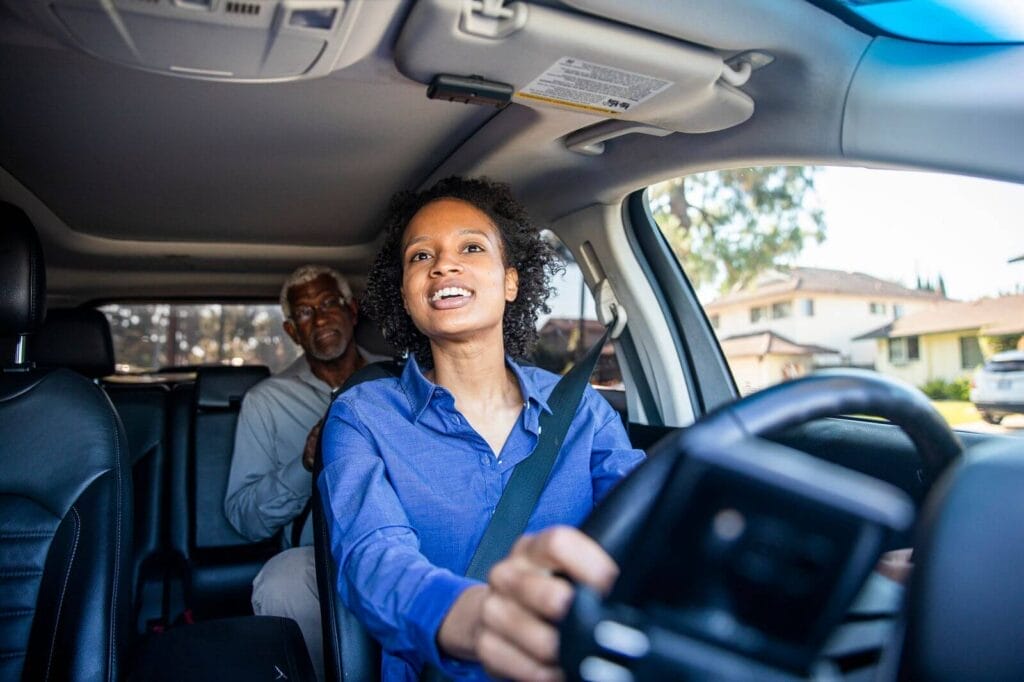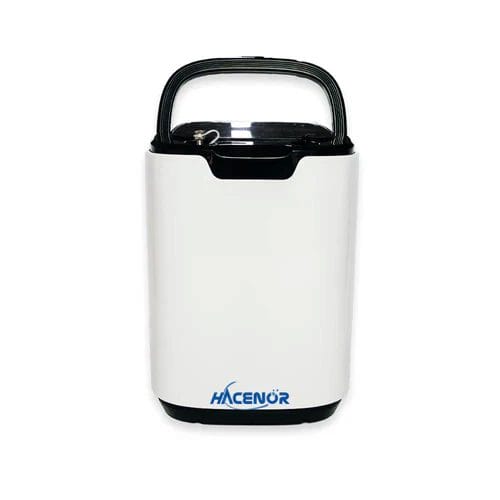
Many older adults retire from driving for various reasons, including changes in physical health, vision problems, and cognitive challenges. If your loved one has recently retired from driving or you foresee a change in the near future, it’s important to ensure that a plan is in place to help your loved one get everywhere they need and want to go. Below are several transportation options for seniors to help them get around after retiring from driving.
Before exploring your transportation options, make a list of the places that your loved one goes: Some transportation options are specific to medical appointments. You may find that a combination of multiple transportation options is necessary to best support an older adult.
Family and friends
Family and friends can be a great resource for older adults who need rides. They can provide transportation to social activities, errands, and medical appointments. This arrangement also creates opportunities for increased socialization for seniors. Creating a schedule is a great way to harness and organize the support team. Online calendar tools and caregiving apps help organize care needs, including transportation.
Family and friends can be a great low-cost option, but some seniors may prefer the independence of alternative options. Next, we’ll explore several transportation options for seniors who don’t want to or can’t rely on family and friends.
Public transportation
Older adults who don’t drive but can still get around relatively independently can use public transportation, such as buses and trains, to get around and stay active in their communities. Public transportation operates on fixed routes, so seniors will have to get to the stops along the route as well as be able to board the bus or train, although many provide some assistance for those who need it. Public transportation options are also usually relatively inexpensive, and many offer discounts for seniors. In some areas, local organizations may offer training on public transportation. For example, King County, Washington, offers public transportation instruction sessions for people with disabilities or older adults 65 and older.
Paratransit
Paratransit is a transportation option for seniors living with disabilities that impact their ability to use public transportation. The Americans with Disabilities Act requires that public transit offer an option for individuals who cannot access public transportation due to a disability. Eligible people can access individualized rides that typically must operate within three-quarters of a mile of the standard public transportation route. Paratransit services can vary, but they may operate along a somewhat fixed route or entirely at the demand of the eligible rider. Although services may be curb to curb, the individual typically must get to the vehicle and inside their destination on their own.
Paratransit rides cost less than rideshares or private transportation options but may cost more than public transportation. Users must schedule rides in advance and within a given geographic range. Rides can be provided to medical appointments or other necessary errands.
Local senior centers and community organizations
Many local senior centers offer transportation services by volunteers to help seniors get to medical appointments and run errands, often at no cost. In addition, senior centers frequently offer social outings that include transportation by bus to local stores, restaurants, and museums. Rides to medical appointments and errands through the senior center often must be scheduled several days in advance and typically must stay within a specific geographic range. Some communities can provide door-to-door transportation, ensuring the senior safely makes it to each destination. Trips to stores and museums are often scheduled based on the other activities at the senior center. Get in touch with your local senior center to see what types of transportation options they offer to seniors.
Rideshare apps
Rideshare apps such as Lyft and Uber can be great options for seniors, especially those who are tech-savvy. Users can call rides on demand or schedule them in advance. The senior can go wherever they’d like at any time. The freedom of a rideshare app can make it the transportation option most similar to driving themselves. However, this option requires the senior to be able to get from their home to the vehicle and from the vehicle to their destination.
For seniors who aren’t as comfortable with technology or don’t have smartphones, Uber and Lyft also offer some services that can help less tech-savvy older adults. Uber Health and Lyft Healthcare both allow health care providers to organize transportation for their patients to appointments. Uber Caregiver is another option for caregivers to arrange for transportation for their loved ones as well as to order deliveries of groceries and over-the-counter medications.
Senior-specific private ride services
There are some alternatives to traditional rideshare companies that cater specifically to seniors. An app called GoGoGrandparent allows users to access rideshare app services by calling a toll-free number instead of using the app. This increases accessibility to seniors who are not tech-savvy. For additional fees, it offers some supplemental services, including grocery, meal, and prescription drug delivery, in addition to some home services, like lawn care and housecleaning.
SilverRide is another senior private ride service that offers rides and assistance tailored to seniors’ needs. To schedule a ride, the older adult can call a telephone number, send an email, or access the website. Drivers are prepared to provide physical assistance to the rider, depending on their needs.
Taxi services
Traditional taxi services provide rides to and from medical appointments, errands, and social visits. In some communities, seniors may need to call ahead of time to reserve a ride. The cost would depend on the distance and duration of the ride. The senior must be able to physically climb into the vehicle on their own. Some communities may be served by ITN America. This organization contracts with transportation providers and taxi services to provide assistance from the door to the rider’s seat inside the vehicle.
Some areas may offer discounted taxi services for older adults. For example, King County, Washington, runs a Taxi Scrip Program for people with disabilities and older adults over 65. Eligible individuals can purchase vouchers for taxi rides at a 50% discount.
Non-emergency medical transportation
Non-emergency medical transit is transportation to medical appointments for seniors and disabled individuals paid for by Medicare or Medicaid. This service is strictly for non-emergency medical appointments. In some communities, this form of transportation is offered in tandem with paratransit services or within area agencies on aging.
Since transportation services vary on local levels, non-emergency medical transportation qualification factors and operational details may differ. For example, in Somerset County, New Jersey, non-emergency medical transportation services are available to adults aged 60 or older and people with temporary or permanent disabilities; eligible individuals must contact the Department of Transportation to schedule rides 48 hours in advance. Contact your local area agency on aging for information on non-emergency medical transportation options in your area.
Private home care services
If you are already considering home care services or could benefit from the home care services a provider can offer, you should keep in mind that many also provide transportation services for their clients. Some providers may ask that the caregiver use the client’s car, while others allow the caregiver to use their own car for a per-mile fee.
This is an option for older adults with physical disabilities or cognitive issues who may need assistance getting to and inside the vehicle, especially if they could also benefit from the other services provided by home care.
Volunteer transportation services
Local nonprofit organizations may offer free transportation options for seniors provided by volunteers. Volunteers typically use their own vehicles and, therefore, may not be able to accommodate people who use wheelchairs. However, they can most likely provide physical assistance from the door to the vehicle and vice versa. Drivers can take individuals around to get to appointments, run errands, or attend social events. Check with local churches and other nonprofit organizations in your area to see if they offer volunteer transportation services for seniors.
Final thoughts on transportation options for seniors
Finding appropriate transportation for the older adult in your life depends on their physical and cognitive health and their destination on a given day. In many circumstances, individuals need to have multiple transportation options to ensure their loved one has access to transportation that meets their needs for their physical and emotional well-being. Many transportation options for seniors vary based on geographical location. You can contact your local area agency on aging to get a more comprehensive list of the transportation options available in your area.








